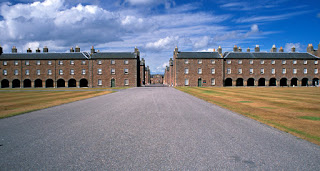 |
| Forthside and Meadowforth sites in Stirling |
 |
| Fort George |
These are the sites being disposed of and what is happening to the current occupants:
Registered Scotish Charity No. SC043826. Showcasing all aspects of Scottish Military History, from Mons Graupius to Afghanistan
 |
| Forthside and Meadowforth sites in Stirling |
 |
| Fort George |
It comes just weeks after the project was awarded £924,000 by the European Regional Development Fund.
The Highlanders Museum Development scheme was launched in 2009 to bring the museum up to 21st Century standards.
The development of the attraction is expected to cost about £3m in total.
The museum will detail the history of all the regiments raised from the Highlands and surrounding islands, dating from just after the Battle of Culloden to present day operations in Iraq and Afghanistan.
The fort was originally built to guard the approaches to Inverness after the 1745 Jacobite uprising.
It attracts more than 66,000 visitors a year, with the museum as its main attraction.
'Much improved'The re-development aims to transform the museum into a state-of-the-art interactive education and learning facility with full disabled access.
An independent economic assessment has suggested that when complete, the museum will contribute an extra £400,000 a year into the local economy - as well as supporting the equivalent of eight new full-time jobs.
HIE has previously awarded the museum £63k towards the initial project design and planning costs.
The public launch of the fundraising began on 25 November, with actor Hugh Grant and his father Capt James Grant as guests of honour.
Maj Gen Seymour Monro, chairman of the Highlanders' Museum, said: "This endorsement of our plans has taken our fundraising appeal over the half way mark, which gives us confidence that the project will go ahead and the region will gain a much improved cultural asset."
HIE spokeswoman, Nicola Ewing, added: "The Highlanders' Museum is home to the biggest military collection outside of London.
"The link between the museum and the local community is clear, with a history dating back centuries."